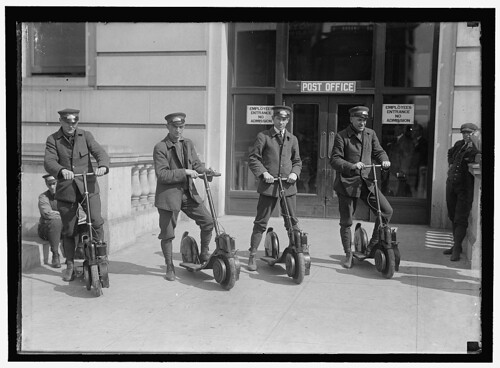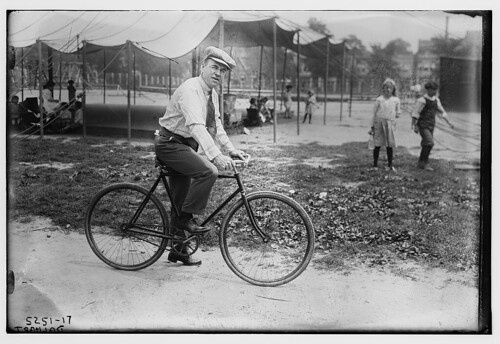
The well-known (let's say) tree-in-a-bicycle of Vashon Island, near Seattle - from Sea Turtle on Flickr
Apropos of nothing in particular other than a short trip planned for Seattle this summer.
When the first diamond frame bicycles became popular in the 1890s they were often called "wheels" - the national cycling association was called the "League of American Wheelmen." We have moved from "wheels" to "bikes," but the bicycles have remained remarkably the same over more than 100 years - elegant in their efficiency and simplicity. And many of the issues that we think are new? They were around then too.



Title-POST OFFICE. POSTMEN ON SCOOTERSIt is unclear where there the above news photograph was taken, other than that it was in a city in the United States. It provides evidence that the idea of commercial uses for powered scooters (here, a small gasoline or perhaps electric motor) is not a new idea.
Contributor Names-Harris & Ewing, photographer
Created / Published-[between 1911 and 1917]
Format Headings-Glass negatives.
Repository-Library of Congress Prints and Photographs Division Washington, D.C. 20540 USA
www.loc.gov/item/2016853758/

 The First Tour de France: Sixty Cyclists and Nineteen Days of Daring on the Road to Paris by Peter Cossins
The First Tour de France: Sixty Cyclists and Nineteen Days of Daring on the Road to Paris by Peter Cossins
Photograph title: Bike story [Bicycle rental store, District Hardware]The Library of Congress has a collection of older photographs from the US News & World Report, including many that never appeared in the magazine. These are occasionally being digitized and put online, which is nice since they are in the public domain.
Creator(s): Leffler, Warren K., photographer
Date Created/Published: 1971.
Medium: 1 photograph : negative; film width 35mm (roll format)
Repository: Library of Congress Prints and Photographs Division Washington, D.C. 20540 USA hdl.loc.gov/loc.pnp/pp.print
Forms part of: U.S. News & World Report Magazine Photograph Collection.
www.loc.gov/pictures/item/2017646391/


